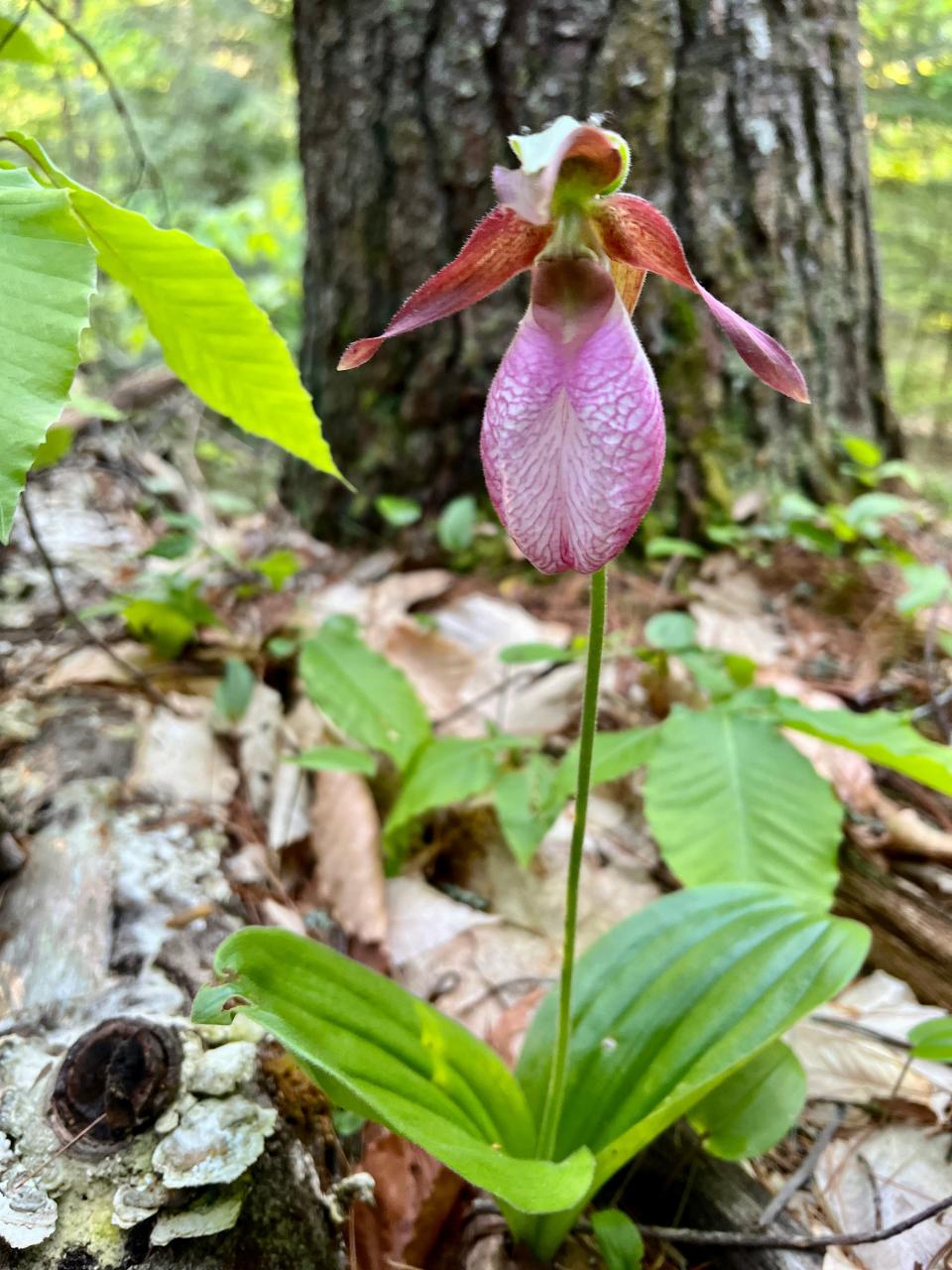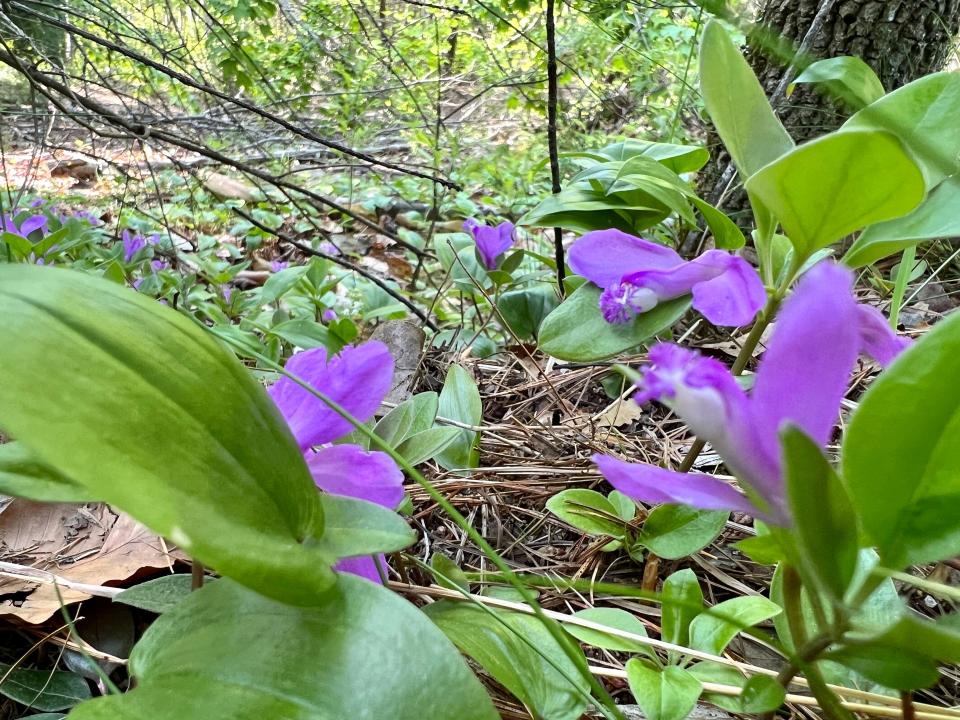How wildflowers' wild reproduction schemes work: Nature News
Flowering plants seem to have it easy when it comes to reproduction … make a flower and wait for some wind or a pollinator to transfer pollen from one flower to another. No courtship rituals, no online dating. Easy! But it isn’t always that straightforward: flowering plants often have elaborate adaptations that help them attract specific pollinators. Two stunning wildflowers blooming in our woods this week are great examples of this diversity among flowers − the pink lady’s slipper (Cypripedium acaule) and fringed polygala, aka gaywings (Polygala paucifolia).
Pink lady's slipper

The unusual shape of the pink lady’s slipper is all about attracting pollinators and ensuring pollen transfer. The lady’s slipper sac-like flower is composed of fused petals that form a hollow pouch. The color and fragrance lure bees (bumblebees in particular) inside through a hole in the center of the pouch. Once inside the bees can’t leave the way they came in, instead, they must traverse the length of the flower to exit holes at the top of the pouch. As they crawl through the pouch they brush against the female stigma which collects any pollen the bee happens to be carrying and routes it down to her eggs. As the bee exits the flower, the anther (the flower's male part) deposits pollen onto the bee’s back. For pollination to occur the bee must visit at least a couple lady’s slipper flowers. The problem is, lady’s slippers provide no nectar to reward visiting bees for their efforts, so bees eventually stop coming. As a result, the pollination rate for lady’s slippers is extremely low.
Gaywings (fringed polygala)

Gaywings have it a little easier. This delightful little wildflower has an orchid-like vibe (lady’s slippers are orchids) and are frequently mistaken for orchids, but is instead a milkwort. Fringed polygala is a low-growing plant (typically no taller than 6 inches) that forms colonies, often blanketing the forest floor this time of year. The bright pink or magenta flowers are made up of five sepals (typically green, leaflike structures that enclose and often support the flower) and three true petals. The sepals consist of three small outer and two large, showy petal-like “wings." Of the petals, the two upper petals are fused, forming the top of a tubular structure. The third, lower petal forms the bottom of the tube and is keeled (or boat shaped), tipped with a delicate yellow or pink fringe.
These flowers are true to their name. To me they look like happy little birds. However some think they look more like airplanes with the fringe-tipped keel resembling a propeller. Like the lady’s slipper this flower has gone to elaborate lengths to both deliver and receive pollen. The keel encloses the reproductive structures, and when a sufficiently large bug (most often a bumblebee) lands on the fringed keel it presses down on this structure causing the reproductive parts of the flower (both male and female) to spring out and hit the visitor–depositing pollen as well as collecting any pollen carried by the bee. And, just in case this isn’t successful, there are also inconspicuous flowers that are borne at the base, often underground, which self-fertilize without opening.
These are both woodland wildflowers — spring ephemerals, taking advantage of the early spring sunlight before the tree's canopy has filled in, morphing their habitat to one of deep shade. I was wrong to think that there is something easy or simplistic about using flowers for reproduction. Take a deeper look at almost any flower blooming in our backyard and you’ll find a rich diversity of reproductive strategies. There isn’t just one right way to ensure reproduce success, there are many.

Susan Pike, a researcher and an environmental sciences and biology teacher at Dover High School, welcomes your ideas for future column topics. Send your photos and observations to spike3116@gmail.com. Read more of her Nature News columns online at Seacoastonline.com and pikes-hikes.com, and follow her on Instagram @pikeshikes.
This article originally appeared on Portsmouth Herald: Wildflowers' wild reproduction schemes: Nature News

